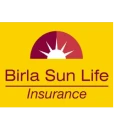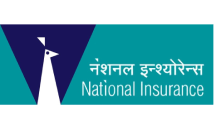Life is uncertain and the risk of untimely death is quite relevant. If the breadwinner of the family dies suddenly, the family loses its source of income and faces a major financial crisis. Savings may not prove sufficient to meet all financial needs. A term insurance plan promises financial security in such times of distress and helps the family deal with financial loss in the unfortunate event of the premature demise of the primary bread-earner.
Table of Contents
- What is a Term Insurance?
- How Does Term Insurance Work?
- Key Features of Term Insurance Plans
- Term Insurance Benefits
- Types of Term Insurance Plans
- Term Insurance Riders
- Term Insurance Buying Guide
- Who Should Buy a Term Insurance Plan?
- When to Buy a Term Insurance Plan?
- How to Decide the Duration of Term Insurance?
- How to Decide the Sum Assured While Choosing a Term Insurance Plan?
- Which Factors Affect Term Insurance Premium?
- Term Insurance Calculator
- Top 5 Term Insurance Plans in India, 2024
- How to Choose the Best Term Insurance Plan?
- Eligibility for Buying Term Insurance Plans
- Documents Required for Buying Term Insurance Plans
- Making a Claim Under Term Insurance Policies
- Documents Required for Death Claims
- Term Insurance Glossary
- Why Choose Turtlemint?
- How to Purchase Term Insurance on Turtlemint?
- Conclusion
- FAQs
What is a Term Insurance Plan?
A term insurance policy is a type of life insurance plan that can be purchased by an individual for a specific duration. The policy also offers a specified sum assured. If the insured dies during the term of the plan, the sum assured chosen is paid by the insurance company as a lump sum to the family of the deceased. This helps the family deal with the sudden financial loss. The term of the policy generally starts from the age at which the policy was purchased and ends when the policyholder achieves the age specified in the plan. Considering the high risk involved in term insurance, policyholders are allowed the option of choosing a high sum assured to cover that risk.
How Does Term Insurance Work?
We discussed above the meaning of a term insurance plan and how it is a vital means of coverage for the risk of untimely death. Now let us quickly understand how term insurance works for the insured and their loved ones in the event of their unfortunate absence.
Once a customer decides the policy term and the coverage amount under the term insurance plan, the premium for the plan is calculated based on multiple factors. These include the age and health condition of the insured, coverage amount and duration selected of the plan, etc. Note that the premium remains constant throughout the policy term.
The premium can be paid at regular intervals or just once. The policyholder can also decide how he wants to receive the coverage amount from the insurance company. Once the policy is purchased, the insurer is liable to pay the coverage amount to the beneficiary or nominee of the policyholder, named in the policy, in the unfortunate event of demise of the policyholder during the term of the plan.
Alternatively, if the policyholder is alive at the end of the term, the coverage under the policy ends without any financial payment from the company. However, if the policy includes survival benefits, the policyholder will receive a lump sum from the insurer upon the maturity of the plan.
Additionally, note that the policy may also be renewed upon its lapse (end of policy term) in case the policyholder so desires. Renewals are generally allowed until the policyholder achieves the maximum age limit defined by the insurer. The premium however is recalculated for the new term of the plan upon renewal.
Key Features of Term Insurance Plans
The following features make Term insurance plans in India unique for purchase:
- They have very low premiums and are generally easily affordable because the policy covers only the risk of death.
- There is generally no limit on the coverage that can be availed. You can opt for higher coverage levels, as per your requirement, for better financial security.
- The coverage period of the plan can go up to a long term, allowing you to enjoy financial protection up to the old age.
- There is no paid-up value or surrender value for term insurance plans. If you stop paying the premium, the policy will lapse and you will receive no benefits.
- Bonus is not declared under term insurance plans. In case of death, only the guaranteed sum assured is paid.
- Wide range of riders are available for term insurance policies. These add-on benefits help enhance the scope of coverage of the policy.
- Most insurers demand a mandatory medical test before issuing the term insurance plan to the prospective policyholder.
- A free look period of 15-30 days is allowed under the plan, during which time, you may choose to cancel the purchased policy and receive a full refund.
- A grace period of 15-30 days is offered by the insurer in case of delayed premium payment on the plan.
Term Insurance Benefits
Term insurance is a one-stop solution for all individuals, families, and senior citizens alike, offering possible solutions to their varied financial coverage needs. A term plan secures your family’s future, assuring you financial security in absolute times of distress. Listed below are some key reasons why you should buy a term insurance plan:
- A term insurance policy is a must for every individual who wants to protect his/her family from a financial crisis in his/her absence.
- The policy promises high coverage at very low premiums, enabling you to opt for an optimal level of coverage. This ensures that your family is well-taken care of financially in case of your unfortunate demise.
- No other investment plan promises financial security as term insurance.
- Term insurance plans come with add-on rider benefits that provide coverage in specific events, over and above the one offered by term insurance. A few examples include permanent disability riders, accidental death benefits, and critical illness riders.
- Premiums payable on term life insurance plans are eligible for tax benefits under Section 80C of the Income Tax Act, 1961. You may receive deductions in your income tax up to Rs. 1,50,000 on premiums payable for term insurance purchased for yourself, as well as your spouse and dependent children.
- Term insurance plans can be easily bought online through a hassle-free process.
- They are relatively more affordable than any other life insurance product in the market owing to the low premiums that are paid only for the death risk covered under the plan.
Types of Term Insurance Plans
Term insurance plans come in different variants. Some of the commonly available types of term insurance plans are:
1. Pure-level term plans
In this type of plan, the sum assured remains uniform throughout the term of the policy. In the event of the death of the insured, the chosen sum assured is paid by the insurer. Pure-level term plans are the simplest term insurance plans available in the market.
2. Increasing term plans
Here, the chosen sum assured increases every year by a fixed amount. In case of the death of the policyholder, the sum assured available in the year of death is paid to the beneficiary.
Let us understand this with the help of a small example. In the case of an increasing term insurance plan, the sum assured increases by 5% every year. If you buy a policy with a cover of Rs. 10 lakhs, the coverage becomes Rs. 10.5 lakhs in the second year. In the third year, the sum assured would be Rs. 11 lakhs, in the fourth year, Rs. 11.5 lakhs, and so on. In case of the untimely demise of the insured in the fourth policy year, Rs. 11.5 lakhs would be paid in the claim, even though the chosen sum assured was Rs. 10 lakhs.
3. Decreasing term plans
This is the complete opposite of increasing term plans under which, the sum assured reduces every year. Decreasing term insurance plans are usually offered as loan redemption plans, wherein the decrease in the sum assured usually equals the reduced balance of the outstanding loan. In case of the death of the policyholder, the reduced sum assured available in the year of death is paid. The objective of decreasing term plans is to pay off the outstanding balance of the loan, in case the borrower dies before loan repayment.
4. Term insurance with return of premium
Also called the return of premium plans or TROP, they are generally different from other types of term insurance plans since they offer a maturity benefit. This means that if the insured dies during the term of the policy, the sum assured is paid to the beneficiary as usual. However, if the insured survives the term of the plan, the premiums paid during the policy term are refunded upon the maturity of the plan. This is why these plans are referred to as the Return of Premium Term Insurance plans. They are generally suitable for those looking for financial security as well as benefits on policy maturity.
5. Group term insurance plans
Group plans are generally bought by companies and organizations for their members. These groups can be employer groups for their employees, banks for their account holders, and clubs and trade unions for their members. Group term plans are offered for only one year. All the members are covered under a single master policy. If during the policy term, any member dies, the corresponding sum assured is paid to the family of the member. Coverage for other members continues as usual. After every year, the plan needs to be renewed. Premiums can be paid by the group, its members, or by both in a specified ratio.
Term Insurance Riders
As stated earlier, term insurance plans also offer the option of add-on riders. Riders refer to additional coverage benefits that can be easily available over and above the existing term insurance plan upon payment of an additional premium. Note that riders are optional and you may choose to buy them to enhance the coverage of your base term insurance policy.
Riders have an independent sum assured that is generally equal to the sum assured of the base policy. There may however be a limit on the coverage amount offered by the rider. If the sum assured of the base policy is higher than the maximum sum assured of the rider, the latter would be restricted to the maximum limit and the sum assured of the base plan would be higher.
For instance, a rider’s maximum sum assured is Rs. 10 lakhs. If you choose a sum assured of Rs. 25 lakhs on your term insurance policy, the rider sum assured would be limited to only Rs. 10 lakhs, while the sum assured of the base policy is Rs. 25 lakhs.
Note that term plans offer multiple rider options and you can choose as many riders as you want. However, the total rider premium should not exceed the premium of the base policy. In some cases, the rider premium is not allowed to exceed 30% of the premium of the base policy, while in others, the total rider premium is allowed to be up to 100% of the premium of the base policy.
Some of the top term insurance riders available under term insurance plans are listed below:
- Accidental death benefit rider: This rider covers death resulting from an accident. In the event of an untimely demise of the insured in an accident, the rider sum assured is paid along with the sum assured of the base policy, providing the beneficiary an enhanced death benefit due to the rider.
- Accidental death and disability benefit rider: This rider is similar to the accidental death rider with added coverage for disability due to an accident as well. In case the insured dies or suffers permanent total or partial disability resulting from an accident, an additional benefit is paid out to the insured or their beneficiary, as the case may be. In case of accidental death and disability, 100% of the rider sum assured is paid. However, in the case of permanent partial disability, only a percentage of the sum assured is paid, depending on the severity of the disability suffered. Moreover, in the case of disability, the benefit might be paid in weekly or monthly installments and future premiums may also be waived off.
- Critical illness rider: This is a very popular rider covering specific critical illnesses. If the insured is diagnosed with any of the critical illnesses covered by the rider, the sum insured by the rider is paid in a lump sum.
- Term rider: This rider entitles the beneficiary of the insured to an additional benefit in the event of the unfortunate death of the insured during the term of the policy. The death can be the result of an accident or due to natural causes.
- Premium waiver rider: This rider is applicable in case the person insured is different from the policyholder paying the premium. Under this rider benefit, if the premium-paying policyholder dies during the term of the policy, the remaining premium payable is waived off. The insurance company pays the premium on behalf of the policyholder and the policy continues undisturbed.
- Terminal illness rider: This works similarly to the critical illness rider however does not cover only specified critical illnesses. Any type of terminal or long-term illness is covered by the insured. The sum assured is offered by the rider to help the insured cover the excessive cost involved in the treatment of the terminal illness. This also helps ease the financial burden of getting the long-term treatment done.
Term Insurance Buying Guide
We discussed in detail in the sections above the importance of buying term insurance plans. However, with the availability of a variety of plans by different insurance companies, the process of choosing the best term insurance plan can be quite difficult. The term insurance buying guide below can help you navigate through your choices better.
Who Should Buy a Term Insurance Plan?
Let us begin by assessing for whom is the term insurance plan an ideal choice. The answer to this is that a term insurance policy is an absolute necessity for every individual who wants to provide financial security to their family in their absence (death). You should consider buying a term plan under the following conditions:
- You are the primary breadwinner of your family
- Your family is financially dependent on you
- You have financial goals for yourself and your family, which need to be met
- You aspire to create a wealth corpus for the retirement phase of your spouse in your absence
- You need to finance the higher education and/or marriage expenses of your children
- You are worried about keeping finances handy for your family’s day-to-day expenses in the event of your untimely demise
When to Buy a Term Insurance Plan?
It is best to buy term insurance early on in life. The younger you are, the easier it is to afford premiums and since health is on your side at a young age, you are eligible to receive a higher sum assured at a low premium. This is because the amount of risk involved for the insurer is considerably lower. With the increase in age, health is likely to go down, which may increase the premium payable on the term insurance plan. This may also lower the sum assured offered.
How to Decide the Duration of Term Insurance?
The tenure of your plan is an important consideration as well. You may choose a short-term insurance plan of 5 years or opt for lifetime coverage. In any case, it is ideal to opt for a plan that is likely to expire before your retirement so that you don’t need to bear the financial burden of paying premiums. Moreover, the payout received from your term insurance plan upon its maturity can help you meet your day-to-day expenses during your retirement phase. Alternatively, in case you wish to continue enjoying the benefits of the plan for a lifetime, you may choose to convert the plan into a full-life plan before its tenure comes to an end.
How to Decide the Sum Assured While Choosing a Term Insurance Plan?
Yet another key factor to consider in your term insurance buying guide is the amount of sum assured to opt for in the plan that you select. Sum assured guarantees financial security to your loved ones in your absence (in the event of your untimely demise).
It is therefore important to opt for a considerable amount that would suffice to take care of all essential expenses to be covered when you are not there. These may include the higher education and marriage of your children, retirement cover for your spouse, and medical treatment costs of your dependent parents or other family members.
Do consider these factors before selecting the sum assured amount for your term insurance plan.
Which Factors Affect Term Insurance Premium?
The premium payable on your plan is yet another deciding factor in identifying which is the best term insurance plan. There are a few factors that impact the premium on your term insurance, some of which are detailed below:
- Gender: Women are generally offered a more favorable premium rate by insurers, considering that they generally tend to have a higher life expectancy than their male counterparts.
- Occupation: People involved in high-risk jobs such as pilots, sailors, or those working with dangerous materials in mines, etc., are likely to pay a higher premium.
- Age: This is a very crucial factor that affects the rate of premium that you pay on your term insurance plan. When you are young and healthy, you are likely to pay lower premiums owing to the lesser risk involved than when you age and start facing health problems. Moreover, younger people can easily afford to pay premiums on insurance since they can work for longer compared to the elderly or retirees.
- Lifestyle: If you have unhealthy lifestyle habits such as smoking, or consumption of alcohol, tobacco, or drugs, you are at a high risk and therefore likely to pay higher premium rates on term insurance.
- Family medical history: Individuals with a family medical history of ailments such as stroke, heart attacks, diabetes, blood pressure, and the like are more likely to pay higher premiums since these conditions may be genetically passed on from parents.
Term Insurance Calculator
Before proceeding with the purchase of a term insurance plan, it is important to calculate the actual amount of premium you would be required to pay. This amount is determined based on several factors as discussed above. One of the simplest and most accurate means of computing the premium is to use an online tool called the term insurance plan calculator.
It helps you calculate the exact amount of term insurance that you would need as per your requirement and also the actual premium payable on the plan regularly. The calculator takes into account all of the factors described in the above section (factors affecting term insurance premiums) and gives you the exact accurate amount. Turtlemint offers a term insurance plan premium calculator to help you calculate the premium for your policy.
Top 5 Term Insurance Plans in India 2024
Term insurance is one of the most popular insurance products available on the market today. Among the dozens of options available by various insurers, listed below are some of the top policies that you can consider for your coverage needs in 2024:
| Term Insurance Plan | Eligible Age for the Plan | Max Age for Coverage | Amount of Premium Payable | Claim Settlement Ratio (CSR for FY 2022-23) |
| HDFC Life Click 2 Protect Super | Min – 18 yearsMax – 65 years | Up to 85 years | Rs. 1,837 per month (approx) | 99.4% |
| Tata AIA Sampoorna Raksha Supreme | Min – 18 yearsMax – 60 years | Up to 85 years | Rs. 1,549 per month (approx) | 99.0% |
| Axis Max Life Smart Secure Plus Plan | Min – 18 yearsMax – 65 years | Up to 85 years | Rs. 1,693 per month (approx) | 99.65% (FY 23-24) |
| Kotak e-Term Plan | Min – 18 yearsMax – 65 years | Up to 85 years | Rs. 1,672 per month (approx) | 98.5% |
| Aegon Life iTerm Prime | Min – 18 yearsMax – 60 years | Up to 85 years | Rs. 2,083 per month (approx) | 99.4% |
How to Choose the Best Term Insurance Plan?
Among the various top plans available, how to choose the best term insurance plan in India? The following pointers can help make an informed choice:
- Make sure that the plan allows you to opt for the sum assured that you need. Find out the maximum coverage allowed under the plan.
- Ensure that the premium of the policy is low and affordable in the long run.
- Look for a comprehensive scope of coverage. Make sure that the plan offers rider options to ensure all-round protection.
- Make sure that the plan is flexible and customizable according to your coverage needs.
- Look for attractive premium discounts that help reduce the premium of the plan.
- Ensure that the claim-settlement process is simple and hassle-free.
- Look for an insurer with a high Claim Settlement Ratio (CSR).
In addition, it is important to compare term insurance plans before buying the one that best matches your requirements and budget. A thorough comparison allows you to choose a plan that offers inclusive coverage benefits and charges low premiums.
Turtlemint provides a single online platform that helps you compare the various term insurance plans offered by different insurers. We have a tie-up with leading life insurance companies offering the best term plans in the market. You can compare and buy the most suitable term insurance policy on Turtlemint.
Eligibility for Buying Term Insurance Plans
Before proceeding to buy the best term life insurance plan in India, you must determine whether or not you are eligible for the policy. Listed below are some of the common eligibility parameters to consider before buying the plan:
| Parameters | Who is Eligible? |
| Citizenship | Indian residents are eligible to buy the plan; in case they move abroad for higher studies/work, plan eligibility stays the same after purchase |
| Lifestyle | Unhealthy sleeping patterns, smoking, drinking, tobacco consumption, and high stress levels reduce the eligibility for entry into the plan since high risk to life is involved |
| Age | Individuals aged between 18 and 65 years; you may opt for buying the plan at 65 years and choose life coverage up to 99 years |
| Medical tests | Most insurers generally recommend policyholders take medical tests before buying term insurance plans |
Documents Required for Buying Term Insurance Plans
Most insurance companies require prospective policyholders to submit a set of documents while buying term insurance plans. The following documents are generally required for submission:
- A proposal form, duly filled and signed
- Age proof (Driving License, PAN Card)
- Identity proof (Aadhaar Card, Voter ID)
- Address proof (Passport, Utility Bills)
- Proof of income (ITR for the previous 3 years, salary slip)
- Recent passport-sized color photographs of the insured and the policyholder (if both are different)
- Form 16/PAN (mandatory)
- Proof of latest medical records
Making a Claim Under Term Insurance Policies
In case of the death of the insured, a claim can be filed to apply for term insurance death benefit or lump sum payout. The following steps define how to file a claim under term insurance plans:
- The nominee can fill up a claim form issued by the insurance company and submit it to notify the insurer of the death of the insured.
- The nominee must also submit the death certificate and other relevant claim-related documents to the insurer.
- The insurance company would then verify all details contained in the claim form and check the documents.
- If everything’s in order, the claim will be settled.
- In case of a return of premium policy, you would need to fill up a claim discharge form to receive the maturity claim. This form should be submitted with your bank details and the policy bond, and the company will refund your premium directly to your bank account.
One of the easiest ways to file a term insurance claim is on Turtlemint. If you purchased the policy from Turtlemint, inform us of your claim and we will do the needful process to help get it settled with the concerned insurer. You may call our toll-free number 1800 266 0101 or send us an email at claims@turtlemint.com.
Documents Required for Death Claims
To raise a death claim, the following documents need to be submitted along with the claim form:
- Death certificate
- Policy bond
- Identity proof and bank account details of the claimant
- Police FIR, post-mortem report, and other documents associated with an accidental death
- Medical records of the insured
- Proof of age of the insured
Term Insurance Glossary
Before buying a term insurance plan, it helps to know and understand the basic terminologies used in the policy document. It is also advisable to carefully read through the entire policy document before buying the plan. A fair idea of the common terms used in the plan can help save unnecessary confusion and potential losses for you. To help make things simpler for you, we present below a glossary of the most popular term insurance terms:
- Claim: It refers to the request made by the policyholder or insured to the insurance company to reimburse the amount of expenses incurred.
- Grace Period: The time allowed by the insurance company after the lapse of the deadline for payment of premium. During this period, any late fee or penalty imposed on the policyholder owing to missing the deadline is waived by the insurer.
- Cash Value: The amount received by the policyholder in a refund in case he/she chooses to cancel the policy and opt out of coverage under the plan.
- Exclusions: The claims that are not covered under a term insurance plan by the insurer.
- Premium: The amount of money that the policyholder is liable to pay the insurance company in return for the benefits received under the term insurance plan.
- Policyholder: The individual purchasing the term insurance plan and responsible for paying the premium regularly to the insurance company.
- Rider: Add-on benefits that can be attached to the base existing term insurance plan on payment of an additional premium.
- Death Benefit: The amount that the insurer is liable to pay the nominee/beneficiary of the insured in the event of the latter’s unfortunate demise.
- Surrender Value: Charges deducted from the account of the policyholder in case the latter chooses to discontinue the policy before its maturity.
Why Choose Turtlemint?
Turtlemint is your one-stop platform for buying the best term insurance plans online. We help simplify the entire process of buying term insurance and also offer complete assistance in raising claims and getting them settled with your insurer so that you don’t need to undergo any hassle in the process.
Some of our USPs are:
- Online term insurance comparison for easier decision–making
- Round-the-clock policy issuance
- Comprehensive blogs and FAQs to help our customers understand various policies and their details
- Easy download facility for all plans on the website
- Hassle-free purchase and renewal of all types of insurance policies online
How to Buy Term Insurance Plans Online?
It is possible to buy term insurance plans both offline and online. You may choose to visit the nearest office of the insurance company you choose to buy the term plan with or from a life insurance agent. However, the process may be time-consuming and sometimes complex too. A more convenient alternative is to buy term insurance online through the Turtlemint platform. You can easily compare the best term insurance plans offered by leading life insurance companies and proceed to buy the one that best appeals to you by following the simple steps below:
- Visit www.turtlemint.com/life-insurance.
- Choose ‘Term Life Plans’ and enter valid details such as your age, gender, smoking preference, annual income, marital status, etc.
- A list of the best term insurance plans will appear on your screen.
- You can compare the available plans for their coverage features and premium rates, and then choose the best plan that suits your coverage requirements as well as your budget.
- Fill out an online application form and pay the premium online to buy the policy immediately.
Conclusion
Term insurance is not a luxury but a necessity that guarantees absolute financial security for your loved ones in your absence. By adding riders, you can even enhance the coverage of your term insurance plan and enjoy extra benefits. What’s more? You can even opt for lifetime coverage under the plan. There are multiple options available to help you enjoy the continued benefits of insurance. Additionally, several insurers are offering these plans at competitive premiums. Make your best choice today on Turtlemint – your one-stop solution to all your term insurance needs.
FAQ’s
Section 80C of the Income Tax Act, 1961, offers tax deductions on the premium payable under term insurance for up to Rs. 1.5 lakh.
It generally depends on your age, annual income, and other factors. The risk cover should ideally be 10-20 times your income earned in a year.
A term life insurance cover that is at least 10x your annual income is generally recommended for purchase.
Yes, you may, though it is best advised to not purchase more than 2 term insurance plans.
The plan would simply cease to exist; however, you may choose to renew the plan to continue enjoying benefits.
Many term insurance plans offer joint life benefits to the policyholder. This means that along with you, your plan would provide insurance coverage to your spouse as well. In case of the unfortunate demise of one partner, the other can continue to enjoy protection under the plan until their lifetime.
Yes, you may use term insurance to pay back any debts such as personal loans or home loans after the demise of the primary bread-earner for the family.
Any death caused by self-imposed injuries, suicide, HIV/AIDS, or intoxication is not covered by term insurance.





















